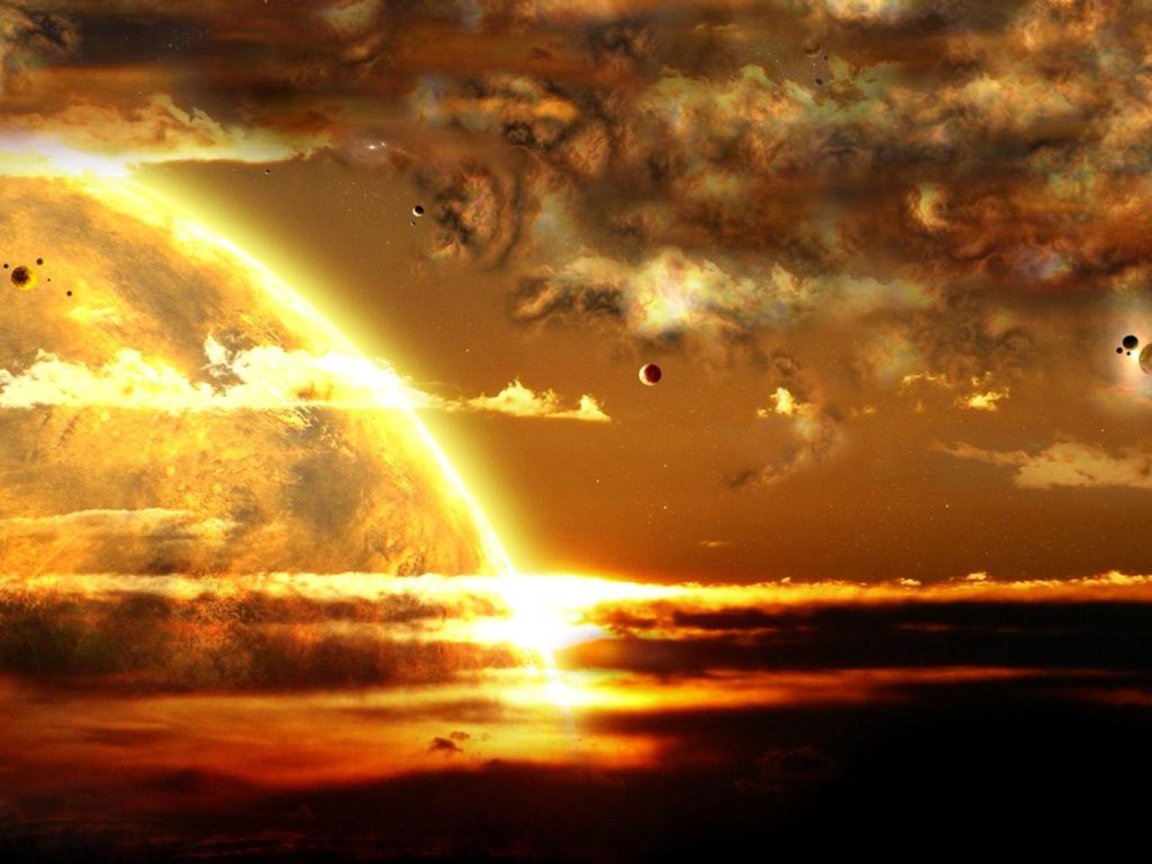

In 1995, during a routine observation of the constellation Pegasus, scientists noticed an odd star that seemed to wobble. This star was 51 Pegasi, and it wobbled exactly the same each night. Of course, scientists were perplexed by this strange, wobbly star. But upon closer study, they discovered something even stranger—51 Pegasi b (unofficially dubbed “Bellerophon”), the first extrasolar planet discovered orbiting a sun-like star.
Although its star is sun-like, Bellerophon is anything but Earth-like.
You see, this planet is massive—150 times more massive than the Earth, to be exact. It’s also extremely close to its star, orbiting less than 5 million miles (8 million kilometers) from the solar surface. Comparatively, the closest planet to our Sun, Mercury, orbits at an average distance of 35 million miles (58 million kilometers). Bellerophon is so close to 51 Pegasi that its orbital period is only 4 Earth days long. This planet is fast… and it’s hot. Temperatures on Bellerophon can reach upwards of 3,632°F (2,000°C).
A little on the toasty side, I dare say.
Bellerophon is so unlike other extrasolar planets that some scientists theorize that it was created by the radiative stripping of a brown dwarf. That’s right, this “planet” might actually be the leftover remains of a substellar star.

Amazingly, despite the fact that it’s almost on top of its star and is constantly pummeled by excessive solar winds, Bellerophon has managed to retain its atmosphere. Of course, it’s so close to the solar surface that water-based clouds can’t exist. But that doesn’t mean there’s no rain—scientists think that this setting is just perfect for iron vapor.
Yes, you read that right: on this planet, liquid iron falls like rain. If you were ever to visit, you’d need an extremely sturdy umbrella—just a few drops of Bellerophon’s iron rain would weigh well over a pound. Of course, you’d have a number of other issues to deal with as a result of this molten rain (like your skin burning off and your spacecraft melting, for example).
And just in case you were still thinking of making travel plans, you should know that Bellerophon is tidally locked to 51 Pegasi. Like Earth’s moon, the time it takes Bellerophon to circle its star is the same time it takes to spin once on its axis. This results in the same side of the planet always facing the solar surface.
So, depending on which side of Bellerophon you land on, you’re either going to have one scorching hot day or one hell of a long night.
This article is second in a three-part series. Read Part I here and Part III here.
FQTQ is managed by two people, Jaime and Jolene. We want to make science fun and engaging. We’re doing that. With your help, we can do even more.
Below you can support us, get to know us, and access extra content: